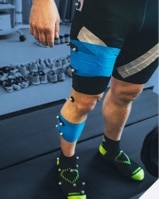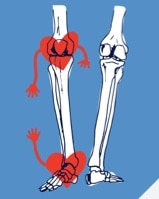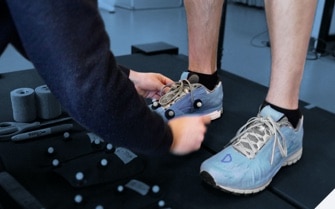Doctor recommended, runner approved.

The APMA Seal of Acceptance granted to several styles of Brooks running footwear demonstrates that we lead in biomechanical research for the runner and prioritize proper fit in our running footwear.
A good fit for better foot health
Whether you stand on your feet all day, walk around all week, or spend months logging miles on the run, a properly fitting pair of shoes is paramount for good foot health.
What makes us an industry leader in biomechanics research? Matt Trudeau, Senior Manager, Run Research Team — Future Concepts at Brooks, explains that our path to a proper fitting shoe starts in a lab where we study body motion and joint movement. Then our products are literally street-tested.


As we develop each shoe prior to its release in the Run Research Lab at Brooks, we assess each prototype based on its fit, feel, and ride. This involves an extensive wear test, and multiple rounds of in-lab biomechanics testing. We’ve developed our own Run Signature testing protocol that accounts for a runner’s individual biomechanics to ensure that the shoe will benefit the runner it is intended for.”
According to Matt, running injuries haven’t decreased over the last 40 years despite industry-wide efforts to develop new foams and support technologies. At Brooks, we see an opportunity to change that by focusing on fit.
Our lab has a validated Shoe Finder that guides a runner toward the shoe that fits their unique biomechanics and desired running experience. We believe fitting the right shoe to each individual runner can enhance their run and minimize injury risk.
This seals the deal
All shoes that are submitted for the American Podiatric Medical Association (APMA) Seal of Acceptance are reviewed and wear-tested by a committee of podiatrists. If the majority of the committee approves that the product qualifies for the Seal, a recommendation is sent to the APMA Board of Trustees for approval of the granting of the Seal of Acceptance.
These medical professionals have dedicated their lives to foot health, and the APMA Seal of Acceptance helps establish our products as transformative in life or a run, one step at a time.
The program recognizes products that have been found beneficial to foot health and of significant value when used in a consistently applied program of daily foot care and regular professional treatment. To earn the seal, each product is reviewed by a group of APMA podiatrists to ensure it promotes foot health. The committee also looks at information on the product’s safety, quality control, and other data.
Shop our APMA approved shoes
Our commitment to a happy run (or walk or stand) is evident in our seven podiatrist recommended shoe styles. Each of these styles has earned the APMA Seal of Acceptance:
This is a carousel. Use next and Previous buttons to navigate.
Shop women's
This is a carousel. Use next and Previous buttons to navigate.
Shop men's
These styles show how we use research to create high-quality shoes based on foot science. A proper fitting shoe is the foundation to our Run Happy — Dance Happy, Walk Happy, Jumping Jack Happy — mission.
Put your feet first
Why is foot health so important? Rob Frimmel, Doctor of Podiatric Medicine, co-founder of Team APMA explains:
Our feet have to last us a lifetime! Proper care of our feet through good hygiene and quality footwear will allow people to live active and healthy lives. Foot pain is not normal, and any foot issues should be checked out by your local podiatrist.”


Dr. Frimmel recommends runners find well-fitting and supportive shoes.
Local running shoe stores are a great place to start to get measured and fitted. They can make sure the runner is getting the proper fit and support. I always recommend to my patients to not look so much at what size is on the box or inside the shoe but how does the shoe feel on your feet. Our feet do change over time, so sizing may also change. Also try on shoes later in the day when feet may swell a little and always try on both shoes. Walk or run around the store to make sure the fit and support are there.”
To help find the perfect fit and get you on the path to better foot health, explore our Shoe Finder.

Next steps
Shop all APMA approved styles.
Want to learn more about research and innovation at Brooks? Check out our shoe research.
Plus, read more gear stories on the Run Happy Blog.
